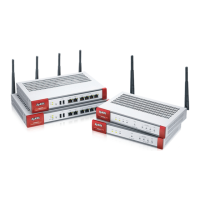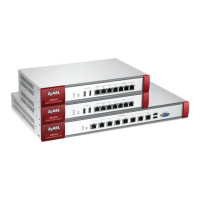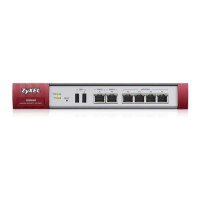Chapter 40 Anti-Spam
ZyWALL USG Series User’s Guide
752
SMTP and POP3
Simple Mail Transfer Protocol (SMTP) is the Internet’s message transport standard. It controls the sending
of e-mail messages between servers. E-mail clients (also called e-mail applications) then use mail server
protocols such as POP (Post Office Protocol) or IMAP (Internet Message Access Protocol) to retrieve e-
mail. E-mail clients also generally use SMTP to send messages to a mail server. The older POP2 requires
SMTP for sending messages while the newer POP3 can be used with or without it. This is why many e-mail
applications require you to specify both the SMTP server and the POP or IMAP server (even though they
may actually be the same server).
The Zyxel Device’s anti-spam feature checks SMTP (TCP port 25) and POP3 (TCP port 110) e-mails by
default. You can also specify custom SMTP and POP3 ports for the Zyxel Device to check.
E-mail Headers
Every email has a header and a body. The header is structured into fields and includes the addresses of
the recipient and sender, the subject, and other information about the e-mail and its journey. The body
is the actual message text and any attachments. You can have the Zyxel Device check for specific
header fields with specific values.
E-mail programs usually only show you the To:, From:, Subject:, and Date: header fields but there are
others such as Received: and Content-Type:. To see all of an e-mail’s header, you can select an e-mail
in your e-mail program and look at its properties or details. For example, in Microsoft’s Outlook Express,
select a mail and click File > Properties > Details. This displays the e-mail’s header. Click Message Source
to see the source for the entire mail including both the header and the body.
E-mail Header Buffer Size
The Zyxel Device has a 5 K buffer for an individual e-mail header. If an e-mail’s header is longer than 5 K,
the Zyxel Device only checks up to the first 5 K.
DNSBL
A DNS Black List (DNSBL) is a server that hosts a list of IP addresses known or suspected of having sent or
forwarded spam. A DNSBL is also known as a DNS spam blocking list. The Zyxel Device can check the
routing addresses of e-mail against DNSBLs and classify an e-mail as spam if it was sent or forwarded by
a computer with an IP address in the DNSBL.
Finding Out More
See Section 40.8 on page 765 for more background information on anti-spam.
40.2 Before You Begin
• Before using the Anti-Spam features (IP Reputation, Mail Content Analysis and Virus Outbreak
Detection) you must activate your Anti-Spam Service license.
• Configure your zones before you configure anti-spam.

